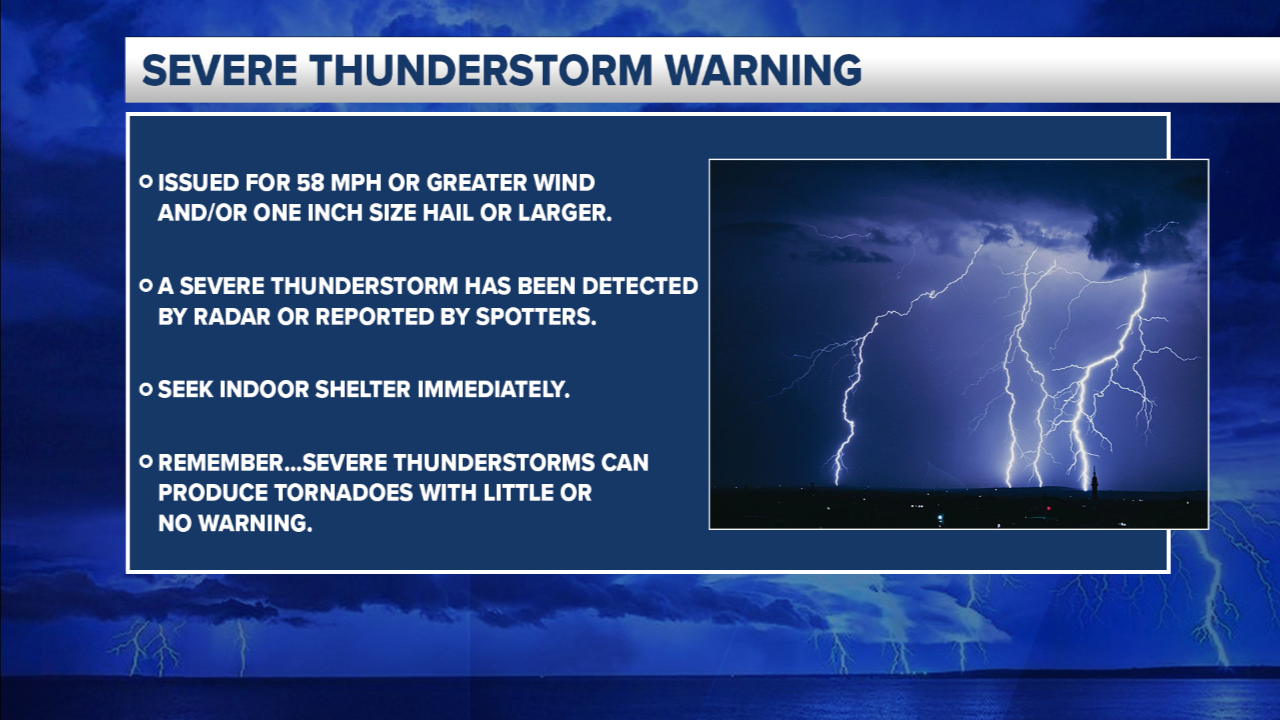WEST MICHIGAN — Severe Weather Awareness Weeks are scheduled across the county as an opportunity to raise awareness of severe weather hazards. It's a time to prepare and learn how to stay safe in severe storms. They are often scheduled ahead of the typical severe weather season for each state. In Michigan, Severe Weather Awareness Week is March 17 through March 23.
The best way to stay safe during severe weather in West Michigan is to be both prepared and informed. The FOX 17 Weather Team will be explaining severe weather conditions and severe weather safety tips all week long. Click here for our daily coverage on Severe Weather Awareness Week.
Today's Question: What is the difference between a Watch and Warning?
You might often hear the FOX 17 Weather Team discuss Severe Thunderstorm Warnings, Severe Thunderstorm Watches, Tornado Warnings, and Tornado Watches. There's a big difference between a watch and a warning.
A watch means severe weather is possible. A warning means that severe weather is happening, and you need to take action.

A good way to remember the difference is by thinking of cupcakes!
During a cupcake watch, we have all of the ingredients available to make a cupcake. We have the eggs, the flour, the sugar, and the salt. However, we don't have a cupcake just yet. We need the exact amount of each ingredient to make a cupcake. We're watching to see if the recipe comes together.
During a cupcake warning, the recipe is exact, all of the baking instructions have been followed, and a cupcake has been made. It's a warning that the cupcake is right in front of us, and we need to take action. In the case of a cupcake, the action might be eating it. In the example of a tornado or severe thunderstorm, we need to find a safe space.
In the terms of thunderstorms, a Severe Thunderstorm Watch means that conditions are favorable and a severe thunderstorm is possible. We have the ingredients in the atmosphere that a severe thunderstorm could develop.

This might include ample moisture, sufficient instability, strong wind sheer, and a lifting mechanism.
During a Severe Thunderstorm Warning, we have the correct recipe in the atmosphere and a severe thunderstorm is happening. During a warning, we need to take action!

In order for a thunderstorm to be considered severe, it needs to meet a certain criteria. A severe thunderstorm must have wind speeds at least 58 mph and/or hail at least one inch in diameter. If we don't have either of those two things, it is simply a non-severe thunderstorm.
Meteorologists have the capability of detecting a severe thunderstorm by Doppler radar or trained weather spotters.
As a reminder, severe thunderstorms can produce tornadoes with little or no warning. That's why it is important to take action during a warning! Head indoors immediately, and find a space away from the windows.

A Severe Thunderstorm Watch is issued by the NOAA Storm Prediction Center, where meteorologists are constantly watching atmospheric conditions across the entire United States.
A Severe Thunderstorm Warning is issued by the local National Weather Service office. In West Michigan's case, that's the National Weather Service office in Grand Rapids.
The FOX 17 Weather Team's job is to monitor conditions, use our knowledge of the atmosphere to communicate severe weather hazards, and notify the public when Severe Thunderstorm Warnings or Tornado Warnings are issued.
For the latest details on the weather in West Michigan, head to the FOX 17 Weather page.
Follow FOX 17: Facebook - X (formerly Twitter) - Instagram - YouTube





